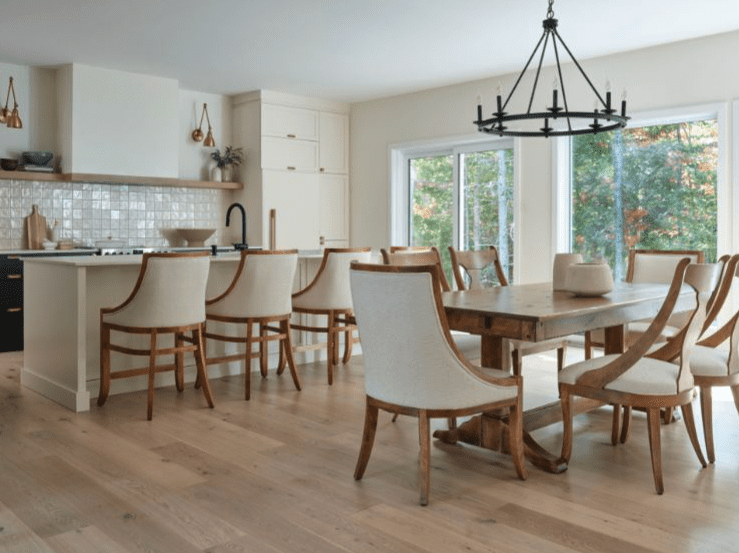Furniture:
Match colors and patterns
Accent a sage green sofa with a wingback chair in a complementary sand or taupe color. Add a throw blanket to the back of a wooden chair that reflects the same shades of earth-tone colors. Top the coffee table with a glass bowl full of natural potpourri made of a mix of pinecones and dried flowers in varying tones of green.
Coordinate the weight of furniture and accessories
If your dining room features a heavy, rectangular oak dining table, coordinate with square-back chairs in a similar wood finish. Forgo delicate chairs for a style that evokes sturdiness. Frame artwork with lightweight and narrow wooden frames that match the finish of the table. Temper the heavy look of the room by mixing in a delicate touch. Place fragile crystal candle holders and a porcelain statue in the center of the dining table. Add potted plants with gently flowing foliage to the room.
Mix and match wood finishes
If you’ve started designing your living room with honey-blond maple, try adding an end table or bookcase in dark walnut as an accent. Coordinate the wood choices in the room by hanging wooden picture frames of each wood finish represented in the room.
Follow a time period theme
If the focal point of your living room is an antique lamp that belonged to your great-grandmother, pair it with an end table that resembles the same time period. Hang paintings that showcase scenes from days gone by. Mix in a few modern focal points for variety. Add a chaise lounge covered in crushed velvet. Position tall ceramic floor pots with floral arrangements in the corners for a colorful touch.
Play up a classic style with a new twist
Pair your low, glass-covered Japanese-inspired dining table with rice paper lamps. Choose a chest of drawers or a buffet with classic Asian artwork on inlaid panels. Then hang modern framed photographs of Japanese street scenes on the wall. Accent the room with bright plush rugs and chic square-style dinner plates.
Mixing patterns
relies on the thoughtful layering of various prints and patterns to create an eye-catching visual landscape. There are a few key rules for mixing patterns like a pro. Scale, color scheme, and symmetry each play an important role in creating a cohesive pattern story.
Scale refers to the size of a pattern. To avoid competing patterns, include a mix of pattern scales. For example, pair a small stripe with a large damask print to create drama without overpowering the look. A color scheme is also essential to creating cohesion between contrasting prints. Look for prints in a complementary color palette to keep the design consistent. Finally, strike a balance in the design by distributing the patterns evenly throughout the space. Become a pattern mixing expert with our design tips and tricks below.
Â
Â



